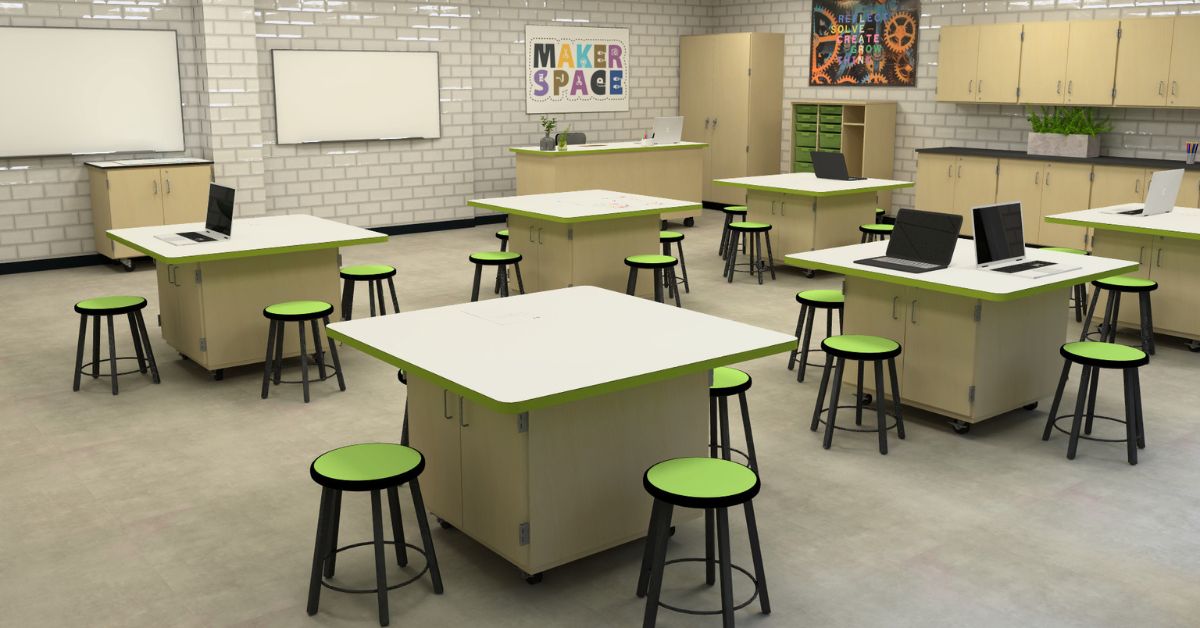The conversation around STEM (Science, Technology, Engineering and Math) education has been a hot topic in schools for years. It’s a framework designed to prepare students for the demands of today’s world, emphasizing the importance of critical thinking and problem-solving in science and math. However, an extra letter has been added to the acronym in recent years, turning it into STEAM, with the “A” standing for art. So, why the shift? And what does this mean for the future of education?
When Did STEM Become STEAM?
The transition from STEM to STEAM education didn’t happen overnight. While the focus on science, technology, engineering, and math (STEM) dates back to the post-WWII era, the acronym “STEM” gained widespread use in the early 2000s to respond to the increasing demand for skilled workers.
STEAM started to gain momentum in 2011 when institutions like the Rhode Island School of Design started promoting the idea that creative thinking and design principles should complement traditional STEM subjects.
Fast-forward to today, where 70% of employers say creative thinking is the most in-demand skill. While STEM focuses on analytical thinking and technical skills, art adds a layer of creative problem-solving, experimentation and emotional intelligence. And when these different sets of skills come together in real-world scenarios, real innovation happens.
Furniture That Supports STEAM Learning
Think of your traditional classroom. While rows of desks may work for a lecture-based class, this type of setup doesn’t work in a STEAM environment. STEAM activities require flexible spaces that support creativity, collaboration and active learning. So, how do you design a STEAM space for success? Let’s explore some key factors you should keep in mind when choosing furniture solutions for STEAM learning environments:
- Modular and Mobile Furniture: In a STEAM classroom, no two activities are alike. That’s why it’s important to incorporate modular and mobile furniture throughout the space to create a flexible learning environment. This way, it’s easier for educators and students to reconfigure spaces easily to suit different activities, including collaborative, hands-on activities or individual creative work.
- Collaborative & Hands-On Learning Tools: STEAM education thrives on teamwork and hands-on learning. Think about incorporating large workstations where groups of students can gather to brainstorm, problem-solve, tinker and build. Writable surfaces, such as whiteboard walls, tables and cabinets like our Access Euro Tote Write-n-Roll Cabinet, can encourage idea generation and interactive learning.

- Storage Options: Most STEAM classrooms have an abundance of supplies and materials. Provide enough storage for these items to keep your space organized. Some options include makerspace workstations with built-in storage configurations, like our Intermix Workstation, or our Access Mobile Tote Storage that can be rolled to workstations when materials are needed during hands-on learning activities.

- Integrated Technology: Like any classroom, STEAM spaces are more effective when technology can be integrated into student projects and workflows. To make the use of digital tools easy, make sure your classroom includes access to power outlets and charging stations, and connectivity for devices like laptops and tablets.
Creating Hands-On Learning Spaces for STEAM Education
STEAM education prepares students to become creative thinkers and problem-solvers ready to tackle 21st-century challenges. At Diversified, we offer a variety of flexible furniture solutions that meet the demands of modern STEAM classrooms. Reach out today to discuss how we can help create adaptable, functional STEAM learning environments for your school.

